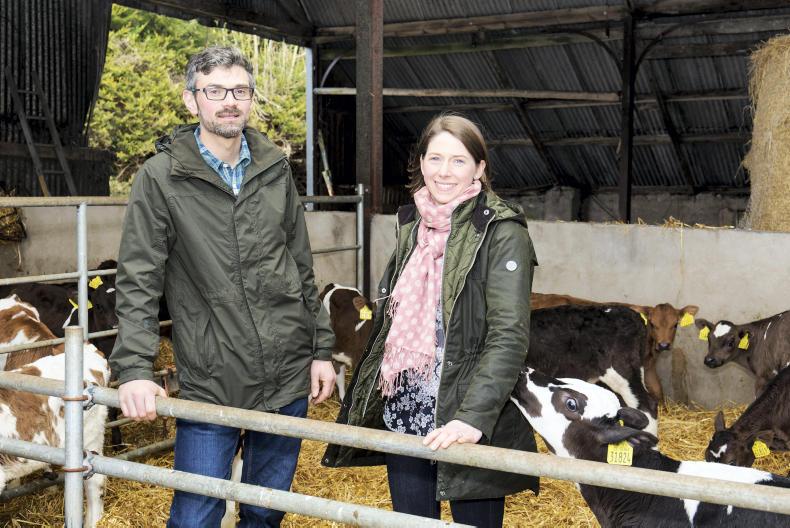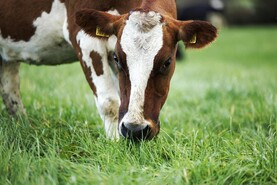As a farm that has milked once-a-day (OAD) for 10 years we often have people calling to find out more about what we do. The lure of OAD being less hours worked while the mechanics of the system’s profitability revolves around having the right cow that can deliver twice-a-day (TAD) solids in a single sitting.
The one question that continually pops up from these visitors is “How will I convince my discussion group that I’m going OAD?” as the peer pressure collective wags a warning finger. Does the decision of choosing lower output for better work-life balance not fit with the current model of “successful” dairy farms?
What comes to mind are two surveys carried out earlier this year. The first involved 181 dairy farmers being asked about issues in relation to spring 2018, while the second was a survey of 490 students studying agricultural science at secondary school level.
The farmers surveyed calved down on average 174 cows and had an average milking block of 60ha, so higher than the national average but definitely in the ball park of where farm efficiency is being pushed towards.
Of these farms almost 40% ran short on fodder in spring and at the time of the survey over half were concerned about conserving enough silage for next winter, noting this was before the drought.
On average, in March they worked 12 hours a day, excluding time to eat and the majority did not take a single day off during the month. To put this in context, this means most farmers surveyed worked 84 hours a week non-stop. When asked what three things caused the most stress in the spring, the top answers were weather, workload and feed. Not surprisingly, 32% of respondents admitted to suffering burnout due to farm workload.
In contrast, the students surveyed were asked questions in relation to careers in agriculture, noting that half of these students had dairy farm backgrounds. Sixty-nine per cent of these students thought working hours were too long in dairy farming.
Most significantly, they identified the two most important factors in choosing a career were income and time off, with time off at the weekend ranking very highly also.
Putting these two surveys together, we can see that farmers are very happy to work long hours but the strain of it is starting to tell and labour is harder to find. The many and varied options open to young people as they choose their career paths become increasingly attractive compared with dairy farming as they align with the important factors they identified, time off and income. How can we balance this mismatch in perspectives to lure young innovative people into our industry? Is the focus and peer pressure within discussion groups and the industry as a whole blind to the fact that there is a social aspect to people’s lives, a social aspect which does in fact have value.
For me, it is not difficult to convince anyone why OAD is the right decision for our farm and our family. After 10 years of figuring out the nuts and bolts of the system, we deliver the same solids per cow as an average TAD farm. The seven milkings per week are split between us, where I do three and my husband does four. We’re back in time for the school run and there in the evenings for the hustle and bustle of having a young family: GAA, rugby, music, dancing… Not for everyone, but for me its priceless.
Read more
Farmer Writes: deal or no deal - it's dusty
Farmer Writes: us farmers are tough
As a farm that has milked once-a-day (OAD) for 10 years we often have people calling to find out more about what we do. The lure of OAD being less hours worked while the mechanics of the system’s profitability revolves around having the right cow that can deliver twice-a-day (TAD) solids in a single sitting.
The one question that continually pops up from these visitors is “How will I convince my discussion group that I’m going OAD?” as the peer pressure collective wags a warning finger. Does the decision of choosing lower output for better work-life balance not fit with the current model of “successful” dairy farms?
What comes to mind are two surveys carried out earlier this year. The first involved 181 dairy farmers being asked about issues in relation to spring 2018, while the second was a survey of 490 students studying agricultural science at secondary school level.
The farmers surveyed calved down on average 174 cows and had an average milking block of 60ha, so higher than the national average but definitely in the ball park of where farm efficiency is being pushed towards.
Of these farms almost 40% ran short on fodder in spring and at the time of the survey over half were concerned about conserving enough silage for next winter, noting this was before the drought.
On average, in March they worked 12 hours a day, excluding time to eat and the majority did not take a single day off during the month. To put this in context, this means most farmers surveyed worked 84 hours a week non-stop. When asked what three things caused the most stress in the spring, the top answers were weather, workload and feed. Not surprisingly, 32% of respondents admitted to suffering burnout due to farm workload.
In contrast, the students surveyed were asked questions in relation to careers in agriculture, noting that half of these students had dairy farm backgrounds. Sixty-nine per cent of these students thought working hours were too long in dairy farming.
Most significantly, they identified the two most important factors in choosing a career were income and time off, with time off at the weekend ranking very highly also.
Putting these two surveys together, we can see that farmers are very happy to work long hours but the strain of it is starting to tell and labour is harder to find. The many and varied options open to young people as they choose their career paths become increasingly attractive compared with dairy farming as they align with the important factors they identified, time off and income. How can we balance this mismatch in perspectives to lure young innovative people into our industry? Is the focus and peer pressure within discussion groups and the industry as a whole blind to the fact that there is a social aspect to people’s lives, a social aspect which does in fact have value.
For me, it is not difficult to convince anyone why OAD is the right decision for our farm and our family. After 10 years of figuring out the nuts and bolts of the system, we deliver the same solids per cow as an average TAD farm. The seven milkings per week are split between us, where I do three and my husband does four. We’re back in time for the school run and there in the evenings for the hustle and bustle of having a young family: GAA, rugby, music, dancing… Not for everyone, but for me its priceless.
Read more
Farmer Writes: deal or no deal - it's dusty
Farmer Writes: us farmers are tough






 This is a subscriber-only article
This is a subscriber-only article










SHARING OPTIONS: